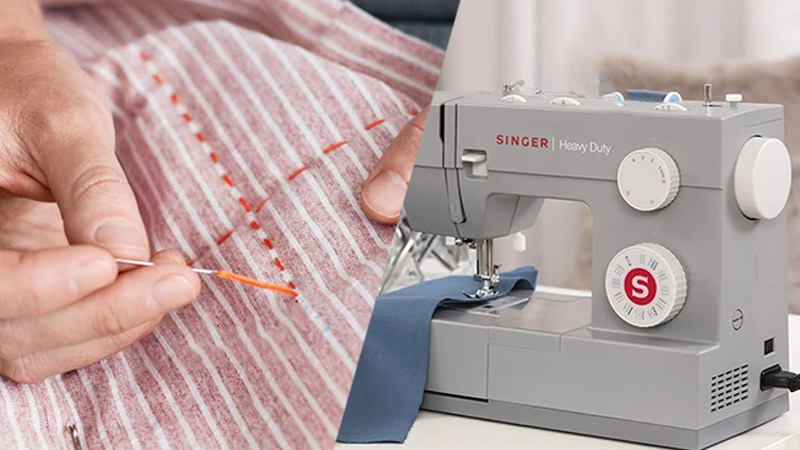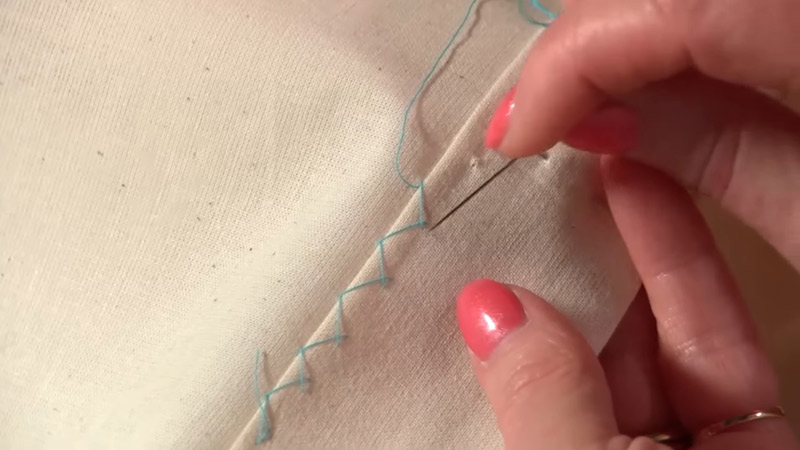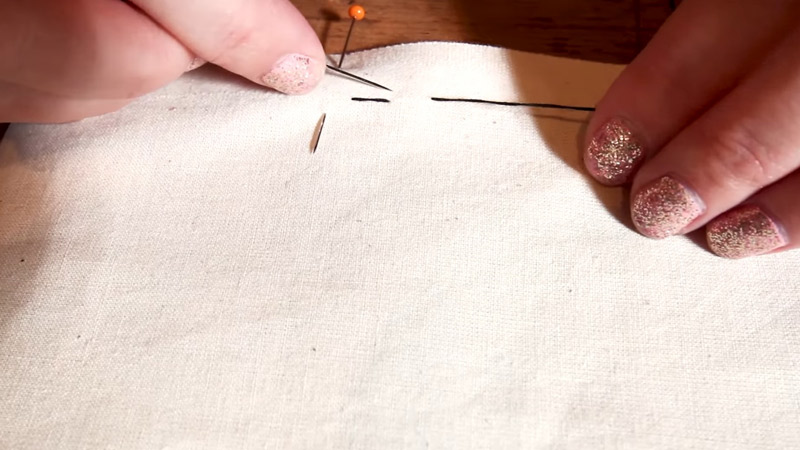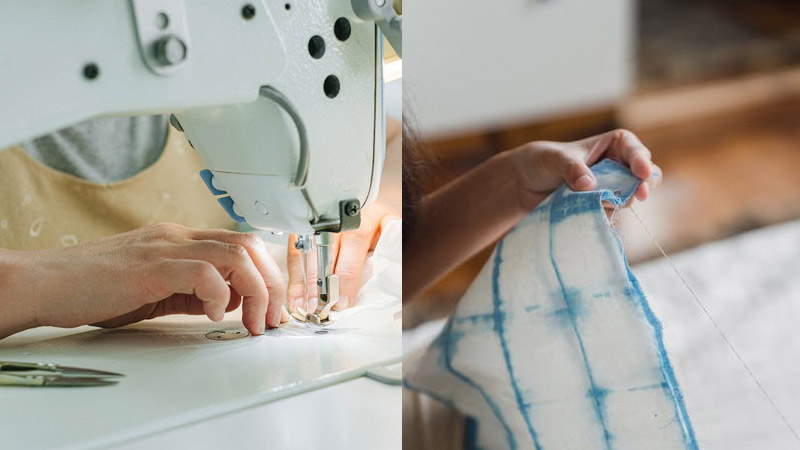The debate between hand sewing and machine sewing revolves around the age-old question of tradition versus efficiency.
Each method brings its own unique set of advantages to the crafting table. Hand sewing, with its meticulous control and versatility, is often cherished for intricate details and delicate fabrics.
On the other hand, machine sewing boasts speed, precision, and suitability for large-scale projects.
The choice between the two depends on factors such as the nature of the project, personal preferences, and the desired outcome.
In this exploration, we delve into the nuances of hand sewing, examining when it takes the lead over its mechanical counterpart and the distinctive qualities that make it a cherished skill in the realm of textiles.

Is Hand Sewing Better Than Machine Sewing?
is it better to sew by hand or by machine?
The answer is both Yes and No. The choice between hand sewing and machine sewing depends on various factors, and each method has its advantages and disadvantages.
Ultimately, the decision may be influenced by the specific project, the skill level of the individual, and personal preferences.
When hand sewing is better than machine sewing:
Delicate Fabrics
When working with delicate fabrics like silk, lace, or chiffon, hand sewing offers a gentle touch that helps preserve the integrity of these materials.
The intricate nature of delicate fabrics makes them susceptible to damage or distortion when subjected to the pressure and speed of a sewing machine.
Hand stitching allows for greater control, preventing the risk of tearing or puckering.
This precision ensures a finished product that not only looks beautiful but also maintains the luxurious feel of the delicate fabric.
Fine Details and Embellishments
Hand sewing shines in projects that involve intricate details such as delicate embroidery, appliqué, or beadwork.
The precision of hand stitching allows the sewer to control each stitch individually, ensuring that every embellishment is precisely placed.
This meticulous approach is essential for achieving artistic and elaborate designs that may be challenging to execute with the mechanical precision of a sewing machine.
Hand sewing enables artisans to infuse their creations with a level of artistry and craftsmanship that is often unmatched.
Small Repairs
Hand sewing is the go-to method for small repairs and quick fixes, such as sewing on a button or mending a small tear.
The simplicity and immediacy of hand stitching make it a practical choice, eliminating the need to set up and thread a sewing machine for minor tasks.
The accessibility of hand sewing allows individuals to address issues promptly, ensuring that their garments remain in good condition with minimal effort.
Portability

The portability of hand sewing is a significant advantage for those who enjoy working on projects in various locations.
Hand sewing doesn’t require access to electricity, making it an excellent choice for on-the-go crafting.
Whether during travel or outdoor events, individuals can easily carry their hand-sewing supplies and continue their projects without the constraints of a power source or a bulky sewing machine. This flexibility adds a level of convenience and versatility to the sewing process.
Educational Purposes
Hand sewing serves as an excellent entry point for beginners in the world of sewing.
It provides a hands-on and tangible way for individuals to learn fundamental skills such as basic stitches, understanding tension, and handling different types of fabrics.
The slow and deliberate nature of hand sewing allows beginners to focus on mastering each technique before progressing to the speed and complexity of a sewing machine.
This foundational understanding gained through hand sewing lays the groundwork for a smoother transition to more advanced techniques and equipment.
Customization and Control
Hand sewing offers unparalleled customization and control over the sewing process. In situations where a high degree of precision is required, hand stitching allows the sewer to adjust tension, stitch length, and other variables with ease.
This level of control is especially valuable in projects where the sewer wants to tailor the sewing technique to specific requirements, ensuring that each stitch contributes to the desired outcome.
Hand sewing empowers artisans to create garments or items with a unique fit and finish that reflects their personal touch.
Artisanal and Slow Fashion

In the realm of artisanal or slow fashion, where emphasis is placed on craftsmanship and individualized creations, hand sewing is often the method of choice.
Artisans appreciate the tactile connection to their work and the ability to infuse a piece with their personality.
Hand sewing allows for a slow, deliberate approach, resulting in unique and bespoke items that stand apart from mass-produced alternatives.
This method aligns with the principles of sustainability and conscious consumption, fostering a deeper appreciation for the artistry behind each hand-sewn creation.
Quilting and Patchwork
While quilting machines exist for efficiency, hand quilting and patchwork maintain their popularity among traditional quilters.
The slow, rhythmic process of hand quilting can be a therapeutic and meditative experience.
Quilters often value the connection they feel with their craft as they carefully stitch each layer together.
Hand quilting allows for precise control over intricate patterns, ensuring that the final quilt is a true labor of love.
The resulting quilts exhibit a level of craftsmanship and individuality that distinguishes them in the world of textile arts.
When machine sewing is better than hand sewing:

Large-Scale Projects
For projects involving a significant amount of fabric or multiple layers, machine sewing is the preferred choice.
The speed and efficiency of sewing machines make them well-suited for tasks like constructing garments, creating curtains, or assembling large textile items.
The consistent and rapid stitching provided by a machine ensures that these projects are completed in a fraction of the time it would take with hand sewing.
Precision and Consistency
When a high level of precision and consistency in stitching is crucial, machine sewing excels.
Sewing machines can create uniform stitches, ensuring straight lines and even seam allowances.
This is particularly beneficial for tasks such as quilting, where evenly spaced stitches contribute to the overall design and durability of the finished product.
Durability of Seams
Machine-sewn seams are generally more durable than their hand-sewn counterparts, making machine sewing the preferred method for constructing sturdy items.
The interlocking stitches created by sewing machines provide strength and resilience, making them suitable for items that will undergo regular wear and tear, such as clothing and accessories.
Time-Saving
The primary advantage of machine sewing is its speed, making it the ideal choice for those with time constraints.
Whether in a commercial setting or for personal projects with tight deadlines, sewing machines significantly reduce the time required to complete a sewing task.
This time efficiency allows sewers to take on more projects and increase their overall productivity.
Variety of Stitches
Many modern sewing machines offer a wide range of stitch patterns, from basic straight stitches to intricate decorative stitches.
This versatility opens up opportunities for creative expression, allowing sewers to experiment with different techniques and designs.
The ability to easily switch between stitches enhances the aesthetic appeal of the finished product.
Efficient Repetitive Tasks
Tasks that involve repetitive stitching, such as attaching collars, and cuffs, or creating long seams, are more efficiently handled by sewing machines.
The consistent and repetitive nature of these tasks is well-suited to the automation provided by a machine, reducing the physical strain and potential monotony associated with hand sewing.
Apparel Construction
When constructing garments, machine sewing is often the preferred method for securing seams, attaching zippers, and hemming.
The efficiency and accuracy of a sewing machine contribute to the professional finish required in the production of clothing on a larger scale.
Sewing Machine vs Hand Sewing: A Comparison of Speed, Quality, and Versatility

Sewing is a versatile craft that accommodates various techniques, each with its own set of advantages and applications.
Two primary methods, sewing machine, and hand sewing, serve distinct purposes in the world of textiles and fashion.
Understanding the differences between these two approaches can help individuals choose the most suitable method for their specific projects.
Below is a table outlining the key distinctions between sewing machines and hand sewing, highlighting their respective advantages and disadvantages:
| Aspect | Sewing Machine | Hand Sewing |
| Speed and Efficiency | Faster and more efficient, suitable for large-scale projects | Slower, ideal for small projects or intricate details |
| Precision | Offers precise and consistent stitches | Requires greater skill for precision and uniformity |
| Versatility | Provides a variety of stitches and functionalities | Limited stitch options, primarily basic stitches |
| Portability | Bulkier and requires access to electricity | Portable, can be done anywhere without power source |
| Learning Curve | May have a steeper learning curve, especially for beginners | More accessible for beginners, gradual skill buildup |
| Durability | Creates durable and strong seams, suitable for heavy fabrics | Depends on the skill level, may vary in durability |
| Customization | Easily adjustable settings for customization | Allows for a high level of customization and control |
| Artistic Detail | Suitable for intricate details and decorative stitching | Ideal for delicate embellishments and hand embroidery |
| Time-Saving | Significantly reduces sewing time | Requires more time and attention for each stitch |
FAQs
Is Hand Sewing as Strong as Machine Sewing?
Yes, machine sewing generally creates stronger and more durable seams compared to hand sewing, as the interlocking stitches contribute to enhanced stability and resilience.
Is hand sewing better for delicate fabrics?
Yes, hand sewing is often preferred for delicate fabrics like silk or lace as it provides meticulous control, reducing the risk of damage.
Which method is more time-efficient: hand sewing or machine sewing?
Machine sewing is more time-efficient, making it suitable for large-scale projects, while hand sewing is ideal for smaller, intricate tasks.
Is hand sewing suitable for beginners?
Yes, hand sewing is often recommended for beginners as it provides a foundational understanding of basic stitches and fabric handling before transitioning to a sewing machine.
Which method offers more versatility in stitch patterns?
Sewing machines offer greater versatility with a variety of stitch patterns, making them suitable for both functional and decorative purposes compared to hand sewing.
Wrap Up
The choice between hand sewing and machine sewing is not a matter of one being universally superior to the other, but rather a nuanced decision influenced by project requirements and personal preferences.
Hand sewing offers precision, control, and a connection to tradition, making it ideal for delicate work and intricate details.
Conversely, machine sewing excels in efficiency, speed, and the ability to handle large-scale projects.
Both methods contribute distinct qualities to the rich tapestry of the sewing craft, and skilled sewers often incorporate both into their repertoire, recognizing the complementary strengths of each approach in different contexts.
Ultimately, the art of sewing thrives on the synergy between tradition and technology.
Leave a Reply